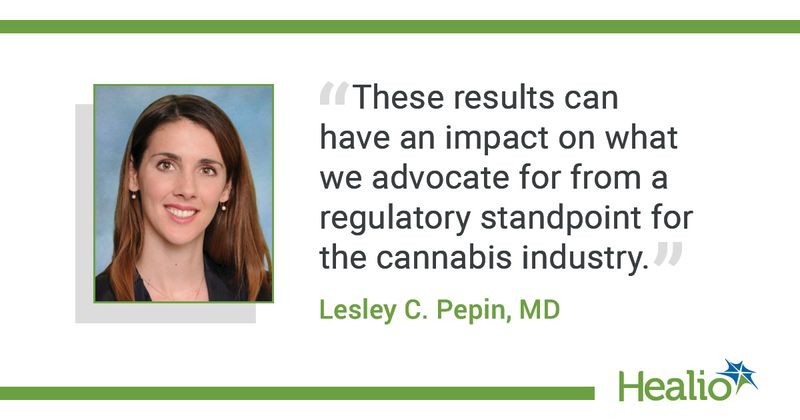Study identifies THC dose likely to be toxic to children
Key takeaways:
- A THC dose of 1.7 mg/kg or greater predicted higher risk for severe effects in children.
- Effects included drowsiness, abnormal heartbeat, loss of muscular coordination and vomiting.
Children who ingest cannabis edibles with a weight-based dose of tetrahydrocannabinol that is more than 1.7 mg/kg are more likely to develop severe and prolonged toxicity, researchers determined.
With the spread of cannabis legalization, unintentional pediatric cannabis ingestions have become “unfortunately common,” one of the researchers said.

“As a group of toxicologists, we have seen a wide range of effects in young children from mildly sleepy to seizing with respiratory failure,” Lesley C. Pepin, MD, a researcher at Rocky Mountain Poison and Drug Safety at the Denver Health and Hospital Authority, told Healio.
“We were interested in investigating if we could use the tetrahydrocannabinol (THC) dose ingested to risk stratify children and identify those likely to be severely ill or symptomatic for a prolonged period of time following a cannabis edible ingestion,” Pepin said. “The research helps us guide providers in their medical management of these cases at the bedside. These results can have an impact on what we advocate for from a regulatory standpoint for the cannabis industry.”
Pepin and colleagues performed a retrospective chart review of children aged younger than 6 years who presented with cannabis edible ingestion in the Colorado Children's Hospital’s network from Jan. 1, 2015, to Oct. 25, 2022, which included 325 children aged 6 years or younger who had a reported ingested THC dose. The researchers included 151 patients in the final analysis.
Noted severe effects included significant respiratory, neurologic and cardiovascular signs or symptoms. They defined prolonged effects were defined as any signs or symptoms lasting over 6 hours.
Ultimately, the researchers found that a THC dose threshold of 1.7 mg/kg or greater predicted higher risk of severe or prolonged effects. Of the 151 cases involving ingestion of edible cannabis, 53% of them met the criteria for harmful exposure. Common findings in marijuana exposures in children included drowsiness, abnormal heartbeat, loss of muscular coordination and vomiting.
“The THC dose threshold that predicted severe and prolonged effects was a bit lower than expected,” Pepin said. “This was really based on our anecdotal experience with our sicker pediatric cannabis cases. Likely, we just have memories of massive ingestions because these are cases where we were consulted to be bedside. Since cannabis has been legal for some time in Colorado, many of our providers are very comfortable managing these ingestions with our poison center's guidance.”
Pepin advised providers that unintentional cannabis ingestions “can present in highly variable ways.”
“Most patients with these ingestions need only medical observation and simple supportive care,” Pepin said. “Extensive testing and invasive interventions such as intubation are rarely needed. When primary providers and pediatricians are considering who is likely to be ill or symptomatic for a prolonged period of time, the 1.7 mg/kg THC threshold can be valuable.
“This is usually more than two of the 10 mg edibles for the under-6-year age group. Young children who ingest a THC dose under this threshold are less likely to need interventions such as sedating medications, oxygen therapy, or intravenous fluids or hospitalization overnight.”
She added that in future research, “investigating the impact of some of the regulation changes” would be “interesting.”
“Cannabis market regulations across North America are not standardized,” Pepin said. “If we understood what was working or not working to limit pediatric exposures, it would likely go a long way moving forward.”
